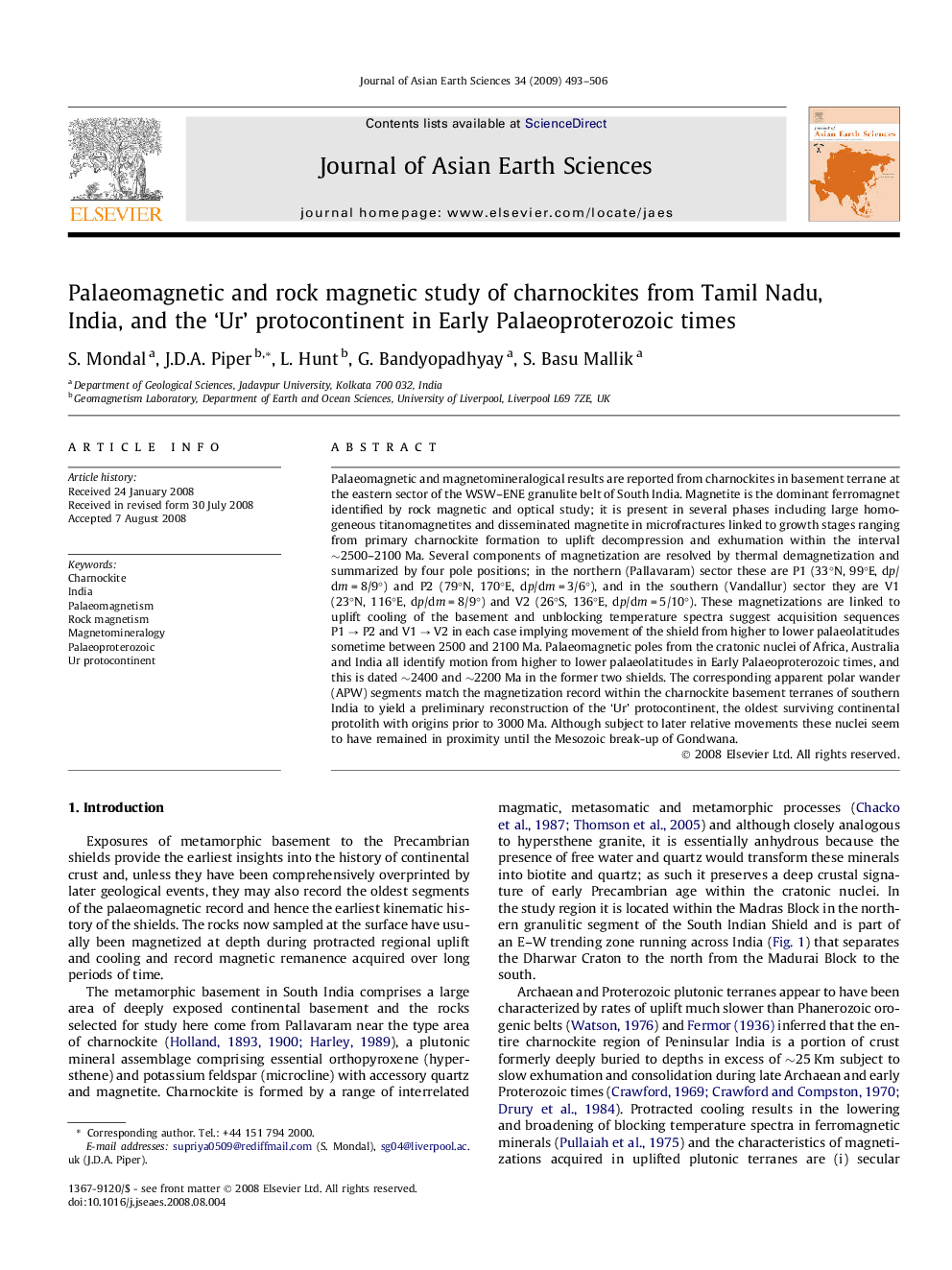| Article ID | Journal | Published Year | Pages | File Type |
|---|---|---|---|---|
| 4732389 | Journal of Asian Earth Sciences | 2009 | 14 Pages |
Abstract
Palaeomagnetic and magnetomineralogical results are reported from charnockites in basement terrane at the eastern sector of the WSW-ENE granulite belt of South India. Magnetite is the dominant ferromagnet identified by rock magnetic and optical study; it is present in several phases including large homogeneous titanomagnetites and disseminated magnetite in microfractures linked to growth stages ranging from primary charnockite formation to uplift decompression and exhumation within the interval â¼2500-2100 Ma. Several components of magnetization are resolved by thermal demagnetization and summarized by four pole positions; in the northern (Pallavaram) sector these are P1 (33°N, 99°E, dp/dm = 8/9°) and P2 (79°N, 170°E, dp/dm = 3/6°), and in the southern (Vandallur) sector they are V1 (23°N, 116°E, dp/dm = 8/9°) and V2 (26°S, 136°E, dp/dm = 5/10°). These magnetizations are linked to uplift cooling of the basement and unblocking temperature spectra suggest acquisition sequences P1 â P2 and V1 â V2 in each case implying movement of the shield from higher to lower palaeolatitudes sometime between 2500 and 2100 Ma. Palaeomagnetic poles from the cratonic nuclei of Africa, Australia and India all identify motion from higher to lower palaeolatitudes in Early Palaeoproterozoic times, and this is dated â¼2400 and â¼2200 Ma in the former two shields. The corresponding apparent polar wander (APW) segments match the magnetization record within the charnockite basement terranes of southern India to yield a preliminary reconstruction of the 'Ur' protocontinent, the oldest surviving continental protolith with origins prior to 3000 Ma. Although subject to later relative movements these nuclei seem to have remained in proximity until the Mesozoic break-up of Gondwana.
Related Topics
Physical Sciences and Engineering
Earth and Planetary Sciences
Geology
Authors
S. Mondal, J.D.A. Piper, L. Hunt, G. Bandyopadhyay, S. Basu Mallik,
